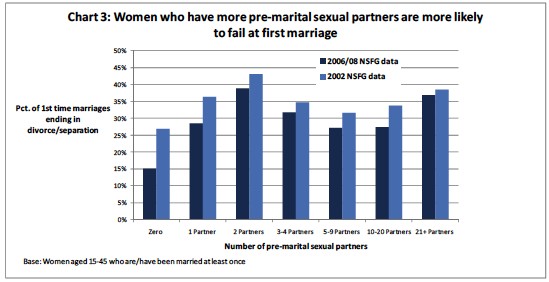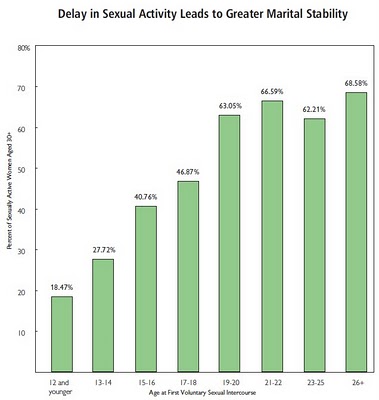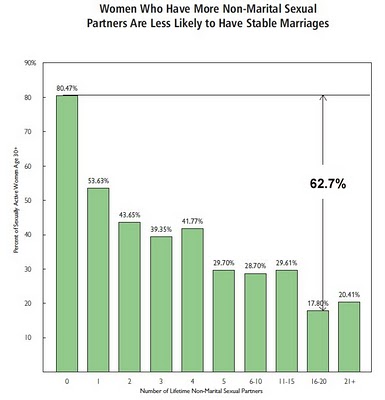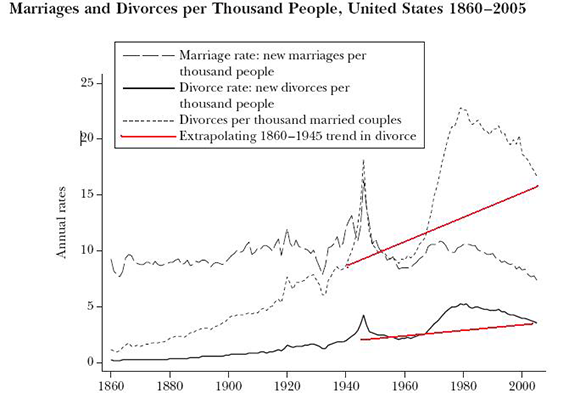We come to the last part of our guide, learning basic interaction with women. I left this for last on purpose; being attractive to women is primarily about demonstrating value to them and the prior advice will turn you into a (more) valuable man. (Game, or at least outer game, succeeds by mimicking the traits that demonstrate value; better to be than to mimic). If you’ve been implementing the previous parts of the guide, your value will already have increased, and you may have already noticed more success (or at least less failure) with women.
Before I begin, I’m going to be honest with you, as I’ve been rather uncomfortable about writing this part. I am mostly a failure in this area; I’m not sure if I’m even qualified to write this, but I have to, because this part is essential to any self-improvement guide for awkward males.
So, you should know that I’m not a player, a master of seduction, or any such thing. I’m not even all that successful with women. In fact, my romantic efforts have proven mostly fruitless in finding myself a wife and I haven’t been in a relationship in about four years. Everything I write here is stuff I’m still working on implementing (theory is a lot easier than practice).
What I do have is experience from being a total loser who wasn’t even in the dating game to having some success. I went from, literally, not being to speak with most women to, a couple of years later, having a couple short relationships. Now, I get occasional dates (one every few months) with moderately attractive women (6-8s). A vast improvement over the nothing I had prior.
So, the advice given here is not about game, it is not about becoming an alpha male, and it’s not about becoming king of the club. This advice will not help you find a smoking-hot 9 for a girlfriend or keep a rotating harem of 8s. I do not have the knowledge or experience to help you with that. If you’re looking for something like that try Roosh or Greene.
What this advice will help you accomplish is to go from being the loser who hasn’t had a date in three years (or ever for that matter) or is forced to date fat or unattractive girls to being a normal, socially well-adjusted man who can get the occasional date with a cute girl and, maybe, a moderately attractive girlfriend. If you’re the kind of person I’m making this guide for, that will be a large improvement over whatever you had (or more likely didn’t have) previously. Even if you’re not as total a loser as I was, some of the advice still might be useful to you.
This advice will not get into game in the sense of gimmicks, tricks, or “mind-games. It is simply about building yourself the social skills to be the kind of man a women of decent value might like to be with.
It will take a lot of work, and it will be a slow, grinding process. Don’t give up, keep trying. Simply remember how psyched you have been and will be in the future when you find yourself doing something you never thought you’d be able to do.
****
Before we being, we’ll talk on the friendzone, a trap many men near the bottom of the socio-sexual hierarchy fall into.
The friendzone is a self-inflicted misery; stay out of it. If you value a woman as a friend, and only as a friend, be her friend and expect and desire nothing else. If something happens, it happens, but do not work towards it, do not look for it, do not desire it, and do not expect it.
It is highly unlikely you will get a relationship out of a friendzone friendship and it is very costly in terms of time and emotional effort. It is simply not something any reasonable person would pursue.
So don’t.
If you are friends with a women because you want a romantic relationship with her, then be forthright. Next time you see her, tell her straight, “I desire a romantic relationship with you. I can not remain friends with you because of my romantic emotions towards you.”
Maybe you’ll get a romantic relationship, maybe you won’t, but it is far better for you (and her) if you are rejected and end the “friendship”
If you don’t get the relationship, simply cut off the “friendship”. Stop spending time, resources, or emotional energy on her. You have better things to do with all three than waste it on a forlorn and pointless hope. Do not try to change her mind (you won’t); simply accept the rejection and move on.
If she asks why you cut her off, tell her the truth. You want a romantic relationship with her, not a friendship.
You can be friends with a woman, but only if the friendship is the end in itself. If the friendship is a means to a romantic relationship, it’s not a friendship; end it.
****
The next little trouble many men who are are socially maladapted fall into is that of “nice guys finish last” while jerks get the girls.
The problem with this type of thinking is twofold: “nice” and “good” are not equivalent and the underlying factor is not jerkiness/niceness but rather a combination of manliness, charisma,and desperation.
Whatever their other flaws, the jerks who get women exude masculinity, which attracts women and often charisma (of a sort); they also rarely exude desperation. “Nice guys” are generally deficient in both, as rather than assert their own purposes, they defer to other’s, particularly women’s, purposes. This is decidedly unmasculine. Nice guys often also lack charisma, it’s boring to have someone who is always nice and agreeable with you and never challenges you. Being nice often gives of a vibe of desperation as well. As with the friendzone predicament, if you’re willing to do many nice things for a woman, she will see you as trying to “buy” her affections because you are desperate for his attention.
You want to avoid that, but that does not mean you have to become a “jerk”. Simply, try to be a man with your own purposes and make those purposes good ones.
Be a good man dedicated to good causes; don’t be a nice guy willing to defer to everyone else.
****
With that friendzone and nice guys nonsense out of the way, we’ll get to the actual meat of the issue.
The first thing you need to do is decide, “what kind of woman do I want?” and “for what purposes?” What kind of woman or women do you want to invite into your ideal life?
“I’ll take whatever I can get” is the wrong answer. It shows both that you are low value and that you are desperate for female attention, both of which are inner failings on your part which will repel women.
Women want a man of high value; what type of high value each woman will care for will depend on her particularity, but all women want a man of high value. The type of women you want to date will likely be of high enough value to be able to demand that.
Also, every women wants to feel like she was chosen because she’s “special.” If she thinks you stuck with her because she’s the only one you could get, she’ll reject you (unless she’s such low value herself that she thinks you’re the best she can get).
So, now be honest with yourself, what kind of woman do you want in your life? What kind of relationship(s) would you like to have?
Think on it a bit.
****
Now that you have an idea of what you want, picture the type of man who has what you want. Look around at your friends, your church, your neighbourhood, your social group, etc. What type of men have the kind of woman you want?
Be that type of man.
Success with women starts well before you even say hi to any women.
It starts by being the type of man the type of woman you desire would desire.
This is nowhere near as easy as the little phrase makes it sound, but it’s the goal. You may never reach it, but work towards it.
I’ll repeat it, because I can not stress this enough:
To be successful with women, you should first be successful with the other areas of your life. Success is attractive to women.
There is no secret to attracting women, there is no shortcut, there is no magic technique; to attract a women simply requires
So keep on improving in all the other areas I’ve already written about.
****
One last piece of theory before we get to practice.
Know your value on the dating market and act accordingly. If you are a short, ugly man, you will likely never get a “9” (barring becoming a billionaire). On the other hand, with enough self-improvement, social skills, and value-building you might get a nice “7”.
If you spend all your time pursuing those 9s who will always reject you, but ignore that sweet little 7 with a crush on you, you will die alone.
Shoot for something attainable, but don’t settle. You want to work on finding a women on the upper edge of what you are able to obtain.
Look for a winning hand, not a perfect hand. If you hold out for a royal flush, you’ll almost surely lose, but that three of a kind will let you take the pot.
****
Theory is over, now for more practical advice.
The first thing you need to do is to talk with women. You’ll never get any romantic success if you don’t start talking with women.
Start with that girl you’ve been mooning over for the past 6 months, but have been unable to talk to (you know full well who I’m talking about). Next time you see her, go up to her, say “Hi, how’s your week been?” Then simply follow along, nod your head where appropriate, and ask questions or interject with your own stories (if you can). Let her carry most of the burden of conversation.
Your first time will probably be pathetic and you’ll probably be scared the whole time.
Good; face the fear.
Next time you see her, do the exact same thing, but a little better. The next time, do the same thing. From now on every time you see that girl, go up to her, ask her how her week (or day, or month, or whatever) has been, and try your best to talk along. (Remember your Dale Carnegie).
After a few weeks have gone by and you’ve talked with her a few times, ask her out. It’s simple: “Would you like to go for coffee (or in summer, ice cream) with me this Friday at 7?”
She’ll probably say no because you didn’t interest her enough with your pathetic attempts at conversation. Accept that she’s going to reject you before you ask and don’t worry about it.
She’s rejected you: that’s great. I know it hurts, but what is far more important is that you tried, you asked her out.
Accept her answer, accept that she doesn’t like you, hurt for a few days or a week or two. Then get over it.
One woman rejected you and there are millions of cute girls out there. Go find another one.
If there is a women you moon over, who you already talk with regularly, just ask her out. A simple, “Wanna go for coffee with me Tuesday night at 6?” will do. See my advice in the friend zone section above.
****
So now we’re at the point where you don’t really have any girl you particularly like, because “she” rejected you.
Good. Time to meet some women.
If you’ve been following along in the guide so far, you’ve probably been meeting lots of new people at your new social activities; I’m sure at least a few of them are pretty girls. Talk to them.
Do exactly what you did with the first girl. “Hi? How has your week been?” Nod where appropriate, ask questions about her (remember your Dale Carnegie), and talk when you can.
Your conversations with women will be awkward and painful at first. Don’t expect success right away. Simply talk as best you can. Every conversation you have will make you slightly better at it. Over time, without even really realizing it, you’ll become proficient. Just keep at it.
Talk with as many girls as you can. The more practice the better.
If you develop a particular fondness for a girl after a few conversations, simply ask her out. Same as above: “Let’s go for coffee for Sunday afternoon.”
You’ll probably get rejected a number of times before you get success. That’s fine, simply accept it and move on.
Don’t get too attached to any particular girl. If you find yourself getting attached to a girl, ask her out. From personal experience I know it is far less painful to be rejected immediately then to drag it out.
Keep talking to the girls in your social circles and keep asking out the ones you like; keep getting rejected.
As you do this, remember what you learned about body language and try (as best you can) to observe the body language of the girls you talk to. It can be a great help to pick up on her tells of whether she’s attracted to you or not.
Then, at some point one will accept your offer of a date.
****
So, now you have a date. Here’s how to go about a first date.
Depending on where you and her live and your transportation systems, you can either pick her up or meet her. Either works, but if she doesn’t have a car and you do either pick her up or meet near her. She will not appreciate having to bus or walk long distances to meet you.
Arrive on time, but do not arrive more than a minute or two early (wait in the car or around the corner if you have to). Arriving early makes you seem desperate and is rather awkward for her. If you’re picking her up, get out of your car and get her; don’t just sit outside and honk.
A good general idea for first dates is gelati/ice cream in the summer or hot chocolate/coffee in the winter for a few reasons:
- They’re cheap, this avoids the “who pays?” awkwardness. $4 coffee won’t cause you much fiscal pain and she won’t feel bad about it. Simply pay for both of you; don’t ask her, don’t consult her. Simply tell the clerk you’re paying for both of you and ignore her “objections”. Pay in cash if possible; little will be more embarrassing than your debit not working because the bank is undergoing maintenance.
- The atmosphere around these is relaxed, unlike dinner dates which are more formal, and ideal for talking, unlike movies.
- Girls love ice cream; I’ve never met a girl who didn’t like ice cream (or a vegan alternative). Go for gelato if you can though. It’s enough like ice cream that everybody loves it and it won’t be off-putting, but just foreign enough that a lot of girls haven’t tried it, giving you a tiny amount of “worldly man” edge.
- Everybody loves hot chocolate on a cold day; it just feels right. Most places that serve coffee serve hot chocolate and vice versa. Order the hot chocolate, and let her choose whatever drink she wants.
When choosing an ice cream/coffee place choose one that is either near a larger park or is in a “walkable”, attractive neighbourhood, preferably a place you’ve been around before.
Once you have your beverages, don’t sit down, instead, go for a walk through the park/ neighbourhood. This has a few advantages:
- You’re doing something. Awkward pauses in conversation are far less awkward when you can both simply walk and admire the scenery.
- Walking lends itself far easier and more naturally to playfulness and energy than sitting at a table or on a couch.
- The scenery lends itself to creating conversation topics. Point out the cool looking dog, laugh at the garish colours of that odd house, remark upon that beautiful tree; whatever. There’s a lot more to talk about when walking around then when sitting down.
- If you know the area, if lends itself well to telling stories showing you have a full life (which is attractive to women). You can talk about the great pizza you had with your friends at Luigi’s, about the soccer game you won at the field over there, about that amusing story with your friends at that pub, or whatever other experiences you’ve had.
Note: If it’s winter or a blustery day, make sure to mention to her that you plan on going for a walk either when you ask her out or when you pick her up so she can dress appropriately. The walk will not happen if she’s not dressed for it.
Now that you’re out walking, what to talk about:
- Do not talk about politics, economics, religion, or other controversial issues unless she brings it up first or you know (for certain) that she’s really interested in them. If you both share the same core religious beliefs, you can talk about that, but avoid deep theology, unless, of course, she brings it up.
- Do not talk about your hobbies that women find boring (ex. video games, science fiction, Warhammer), unless you know she shares those interests. You can mention them if she asks what you like to do, but don’t spend any time on them. Nobody cares about your lvl 17 Orc Paladin.
- Avoid talking about your job, unless it’s very interesting. If she asks mention it, but most of use have relatively uninteresting jobs; don’t bore her by dwelling on them.
- Do ask questions. Ask about her about herself, her family, her hopes, her dreams, her hobbies, etc. (remember your Dale Carnegie), but avoid it being an interrogation. After you ask about her family, tell her a bit about yours or remark about . If you find yourself asking two questions in a row you’re probably doing it wrong.
- Talk about yourself. Let her get to know you. Talk about your (interesting) hobbies, your sports, your family, your recent trip, what you read recently, your friends, etc. But make sure to include her in the conversation; if you’ve been talking for more than few minutes without her saying anything (unless it’s a long, but good story) you’re doing it wrong.
- Talk about stuff you see or stuff going on around you.
All these conversation “rules” are solely to help you get conversation started (or restarted after an awkward pause). Once it’s started, let the conversation flow naturally. If you’ve got a good conversation going don’t ruin it by trying to hard or trying to stick to a set of rules. Simply go with the flow.
End the date at the right time. If things are going well and conversation is flowing, keep going, let the date continue, don’t cut it off when things are going well. On the other hand, if there’s a natural end point and you’re running out of things to say, end the date. (Ex: “There’s my car” or after a longer pause “I have things to do, we should head back”)
Don’t try to awkwardly prolong the date; end it a bit before it becomes awkward, and try to end it naturally.
Finally we get to parting. If you’re dropping her off, get out of the car and walk her to her door. If you met up, walk her to her car or bike. If you both walked, don’t just awkwardly walk away; make a definite part.
So how do you part?
That depends on a large number of factors such as how well the date went, your comfort level, her apparent comfort level, how much you like her, her apparent like for you, and your (and her) views regarding physical intimacy.
Whatever it is do not draw it out. Once you are at the parting point, make it short, a few sentences and a parting hug/kiss. Do not keep blathering away like an idiot; it makes things awkward.
If you don’t want to see her again, a hug or handshake, and a thanks for the date will suffice. Do not tell you’ll call her if you won’t. Thank her for the date and tell her you enjoyed meeting her.
If you do want another date, then tell her you enjoyed the date. Then either tell her when and how you’ll contact her again (something like, “I’ll call you in the next couple days) or if you know your schedule, lock down the next date (“I’d like to see you again, how about next Friday night?”).
Follow this with some physical contact, depending on how the date went and your comfort level. A few types of contact are always bad, such as a parting handshake or a side hug (the way I too often end a date). Here’s some good types of physical contact to end a date with:
- A full kiss. This is high risk. If you go for this and get it, you can be sure the date went well, but not all girls are comfortable with it and there’s a good chance it could flame out. As well, some, such as myself, may think it is too high a physical ecalation for such an early time. Go for this if you’re both really digging each other and you’re comofrtable with it. If she turns her cheek, that’s fine; if she pushes away you’ve blown it.
- A full hug. This is the safe move; it’s neutral and won’t win you any points but its positive, will rarely be rejected, and won’t lose you points (except among the most licentious of women). Make sure you lead and make it a confident chest to chest press with both your arms around her. Don’t lean over, don’t fumble awkwardly trying to avoid her breasts, don’t do a side hug, don’t make it awkward, and don’t be tenative about it. Commit to it fully and just go for it. Hold it for two or three seconds, but no longer.
- A light kiss on the forehead or top of the head. This has some intimacy to it and can be positive, but it has a sort of paternalism to it, which may backfire on you.
- Take her hand and give a light kiss the back of her hand, like an old school gentleman. This is usually positive, as it harkens back to chivalry and most women get a little giddy from that, but the traditionalness of it can occasionally backfire, especially with more feminist women.
- A peck on the cheek. Fairly safe for a date that has gone well. It shows a bit of intimacy, but is not as forward as the full kiss. It can possibly end awkwardly depending on how conservative she is or if she’s not as in to you.
Then tell her “See you later” and part. Don’t wait around after the goodbye contact; it makes things awkward.
****
Now you have a second date (or third or fourth, your first few dates should all be similarly casual and give you the chance to get to know each other).
Choose something else relaxed, fun, and inexpensive, preferably something you know she likes. In a pinch, ice cream can work again, but may look a little stale.
- If you share a hobby, doing that together would be a great idea.
- Minigolf is good. It’s fun and relaxed. So is bowling.
- A hike in the woods, a stroll in a large park, or a walk at the zoo or aquarium can be a good adventure. It’s relaxing, fun, and there’s plenty of interesting stuff to see, talk about.
- Ice skating is great for the winter; it allows a great interplay between playfulness and getting to know each other.
- Museums, art galleries, etc. can be a good trip. Make sure to choose something she might be interested in.
- If you have a local touristy area, checking that out can be a good idea. You can walk around, admire the sites, check out the stalls, and have some casual snacks.
All of these can also work well as first date ideas.
After the first few dates, you can try dinner and a movie or, even better, cook her a meal and watch movies at your place.
After that, you’re on your own. You should know enough about her by this point to be able to figure out how to spend time together. Let things work from there.
****
Lastly, cold approaches.
This is not something you’ll be able to do right away and will always be troublesome. You’ll probably need to build up to it. I still have difficulties with it. But here’s some exercises to help you build up to it.
Start by simply looking girls in the eye and smiling (make it a confident smile), as you pass them in the streets. In fact, try to make it a habit. Do this for every girl you see for two weeks.
The next two weeks, do the same, but say hi as well. Then keep walking (unless she makes a point to start a conversation with you; in which case talk to her).
The following two weeks, do the same, but if she smiles or says hi back, ask her how her day is going.
The following two weeks, if you see a girl you think is really pretty talk to her. If the clerk at Target is cute, as her about her day. Ask the gal on the bus what she’s reading or where she’s going. Ask the girl in line with you at the coffee shop how her day has been.
If any at any time, these turn into real conversations, and it seems like she might be interested, ask for her number.
If you get it, phone her two days later and set up a date. Then go to first date protocol.
Start small, and work your way up.
****
Random Tips
- Remember your Dale Carnegie: smile. When interacting with women, be happy, be energetic, be positive. Nobody is attracted to the morose loser. (The brooding loner can be attractive if pulled off right; but if you need my help, you aren’t going to pull it off right).
- Remember your body language. If you can’t be confident, at least look it. Also, look to women’s body language. I can not stress enough the importance of body language.
- Take advantages of opportunities. If a girl says she really wants to go to a new restaurant, or see a new museum exhibit, or visit some place, or try some activity, she’s handing you an opening, use it. It’s a simple, “That does sound like fun, how about we go see that local play next week?” If she hands it to you, take it.
- No movies or dinner for your first few dates. Save movies until after you’ve known each other a while, because they don’t let you to talk during them. Save dinner until you’re actually dating, as it costs a lot, is too stereotypical (and thus “boring’), and looks try-hard.
- Don’t be desperate. Avoid phoning her more than once a day, and don’t phone her more than once between each date for your first half-dozen dates. Don’t text her twice in a row. After a date, wait a day or two before contacting her again. You can relax on these rules once you’re in a steady relationship.
- On the other hand, don’t go too far the other way. If you wait to long, she’ll simply not respond.
- Try to be natural. Don’t try too hard, don’t look like you’re trying to hard. Don’t try to put on a false persona. Act natural and confident.
- Practice. Social skills are like any other skill; you need to practice.
- Keep eye contact.
****
Your goal:
Your goal for the week is to look every girl you pass in the streets in the eyes and smile at her.
Also, if you see “her” this week who you’ve been unable to talk to, ask her how her day is going.
If “she” is a friend or acquaintance you have talked to, ask her out.















